Why India’s Elite Are Quietly Losing Their Minds — And What I Found in a Mushroom
Share
By Dr. Anish Hiresha Verma, PhD Nanomedicine
Dr. Anish Hiresha Verma writes about the future of functional wellness, superfoods, mushrooms, and Agri-Nanotechnology in India. Connect with him at LinkedIn.
Abstract
Across India’s elite professional class — founders, civil servants, clinicians, investors, and high-performing women — a silent breakdown is underway. It is not psychological in origin. It is biochemical. And we are misdiagnosing it at scale. This article outlines my personal journey as a trained nanomedicine scientist who experienced this collapse firsthand — and what I found in an unexpected place: Himalayan-grown medicinal mushrooms, backed by neurobiology, not mythology.
1. The Collapse Begins Quietly
“I didn’t burn out with fire. I dissolved in fog.”
That’s how a founder-friend described her third breakdown in 18 months. And I understood it — because it happened to me too.
In 2022, when I was pursuing a PhD, I couldn’t focus after 10am. I slept, but woke up empty. I kept executing — but felt no joy. Just forward motion.
Around me, everyone looked “fine.” But beneath that appearance, I sensed a silent breakdown in motion — biochemical, not emotional.
2. Burnout Is Not a Buzzword. It’s a Neurochemical Event.
We casually attribute fatigue, fog, and low drive to “stress.” But here’s what burnout actually looks like at the molecular level:
- Cortisol remains elevated — the body never returns to baseline
- Neurogenesis slows — brain cells stop forming connections
- ATP production dips — your cellular battery is drained
- REM sleep declines — you stop dreaming entirely
This is not “just stress.” This is long-term cognitive infrastructure erosion — and it’s especially common among India’s most responsible minds.

3. Why Common Solutions Fall Short
Most high-achievers turn to productivity tools or rituals:
- Caffeine stimulates temporarily, then crashes
- Vacations offer relief, but not repair
- Therapy and journaling create insight, but not cellular change
- Supplements often mask symptoms, not solve causes
All these approaches serve a purpose — but none rebuild the damaged neural systems at the root.
4. A Shift in Perspective: From Nanomedicine to Fungi
As a scientist, I initially dismissed mushrooms as fringe wellness. But after reviewing biochemical data from East Asian labs and Indian practitioners, I began to reconsider.
My turning point came when I revisited three compounds — not as folklore, but as neurobiological interventions.
a. Lion’s Mane (Hericium erinaceus)
Stimulates NGF (Nerve Growth Factor) → supports synaptic repair, memory recall, and cognition.
b. Cordyceps militaris
Delivers cordycepin, an adenosine analogue → enhances ATP synthesis, improving stamina and mental clarity.
c. Reishi (Ganoderma lucidum)
Modulates the HPA axis → normalizes cortisol, enhances sleep quality, and reduces systemic stress.
These compounds don’t stimulate — they restore. And they don’t just “feel good.” They rebuild the brain.

5. An India-Grown Solution
The mushrooms we work with are not imported. They are grown in Himalayan ecosystems, under the leadership of my mom- Dr. Hiresha Verma, known as Mushroom Queen of Himalayas.
Together, we’ve developed formulation-led, protocol-grade interventions — not supplements, but neuro-restorative tools for those experiencing functional collapse under performance pressure.
At Hi Shroomz™, we translate these compounds into systemic cognitive scaffolds, grounded in pharmacology, not hype.
6. Who This Is For
If you resonate with any of the following, you may already be in this zone of biological burnout:
- Founders with long-term focus loss and cognitive fatigue
- Senior officers or decision-makers who feel emotionally flat
- High-functioning women navigating hormonal-cognitive dual burdens
- NRIs carrying cross-geography stress loads
- Health professionals who feel mentally sharp but biochemically exhausted
This is not about “taking mushrooms.” This is about mental sovereignty in a world designed to extract your focus, your energy, and eventually your clarity.
7. From Collapse to Clarity
When I began this journey, I wasn’t seeking mushrooms. I was seeking something no one had given me: a biological explanation for why people who “have it all together” still feel depleted.
If you’ve been silently struggling — it’s not weakness. It might be biochemical debt. And it is reversible.
8. Quietly, We’re Building Something
If you're curious, I built a quiet space — not for marketing, but for understanding. Explore it here: 👉 www.hishroomz.com
And if you want to follow my research, failures, and frameworks: 📍 Dr. Anish Hiresha Verma on LinkedIn
I don’t promise instant fixes. But I do believe in scientific rituals that work — without noise.
—
Dr. Anish Hiresha Verma
Scientist (Nanotechnology & Medicine) | Founder, Hi Shroomz™ - Han Agri Innovations Pvt. Ltd.
A Precision Lab for Biointelligent Mushroom Protocols — Born in India, Built for Global Minds
Nothing is impossible for a Willing Heart. — My mother
